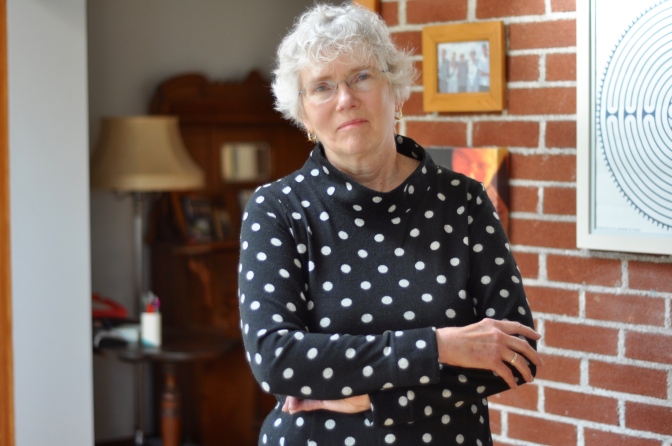It's been six weeks since Dad died. As we settle into our new reality, I often relive his last weeks. I've been thinking about how the medical community deals, or doesn't deal with the very idea of dying. Historically, physicians have been trained to save lives, not to guide patients and their families through the death experience.
As usual, it was a CBC radio program that prompted this recent examination. On Brian Goldman's show, White Coat Black Art, (May 5) he interviewed a couple of young mothers about the deaths of their children. They belong to a group called One More Thing, as in, doctors often propose yet one more thing that could be tried, to extend the life of a medically fragile child.
The promo for the show reads, "We need to talk about death, say parents of children with life-limiting illnesses. Parents question why the medical system doesn't include death in their conversations with families, particularly those with medically fragile children." Click
here to listen to the show.
Much of what those young parents said, about wanting more honest discussion and preparation for the deaths of their children, could be applied to patients and families of all ages. It would help a great deal if doctors would give their honest assessment. If a professional told you up front, that your loved one was probably not going to live much longer, then everything would change. You could stop the fight to try one more thing, to beat whatever illness you were battling. If that news was delivered honestly and carefully to all family members, then they could work together more easily to comfort their loved one. If the patient heard that news, then he or she would have a chance to come to terms with the diagnosis; they might come to some kind of acceptance and be ready to make the most of their remaining time.
To be fair, a doctor friend told me that "it is always harder to predict prognosis in non-cancer patients". Dad was spared a diagnosis of cancer. He never had to endure excruciating pain or a myriad of side effects from chemotherapy or radiation. However, if cancer has anything positive to offer, it may be that impending death is sometimes easier to predict. Many years ago a friend of mine spoke about the "gift of time" that cancer gives. In her case, she and her family knew that her mother was going to die from her cancer. They used her last months to spend quality time together, to plan, to reminisce, to enjoy each other's company.
I realize that the decision about whether to keep pursuing more possible medical intervention or to accept the approach of death, is one of the most difficult and profound of decisions. This is not a simple, straightforward task. Of course, we don't want to say goodbye to our loved ones. We want them forever. But at some point we are not doing them any favours when we deny the facts that may be right in front of us.
On the Friday before my father's death, we went to a lot of trouble to bundle him up and have him transported to an appointment with a specialist. That doctor said he was not concerned with the diagnosis of pulmonary fibrosis. He said it could take about a year for Dad to recover from his pneumonia. He gave him a requisition for an xray and told him to come back in six weeks.
Dad died the following Thursday.
I highly recommend having a nurse in the family. In our case we have two. They helped us to recognize that Dad was probably dying and didn't have much time left. He was eating less, sleeping more and becoming weaker by the day. We worked hard to have him followed by the local Palliative Care team. Fortunately, on Monday, palliative care doctors started coming to Dad and Mom's home, where we were caring for him. They were wonderful and gently guided us through Dad's last four days. We were very fortunate to be under their care. Our daughter works in palliative care in Toronto. Her knowledge and insight were valuable as we travelled on that difficult journey. Dad died at home with many family members around his bed.
From our experience, I think that medical professionals would benefit from more training in the field of death and dying. On a local level, we realize how lucky we were. There are some areas of Ottawa that still have no access to palliative care. There's a lot of education and resources needed to improve the situation for dying patients, of all ages.









